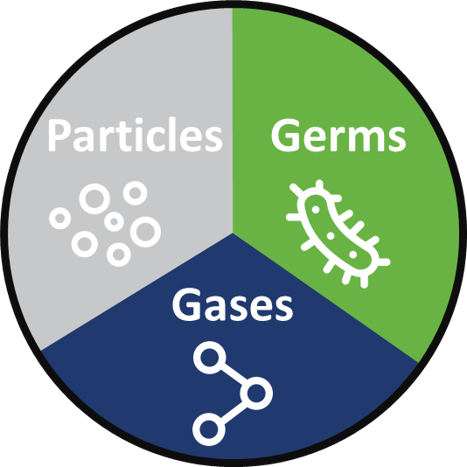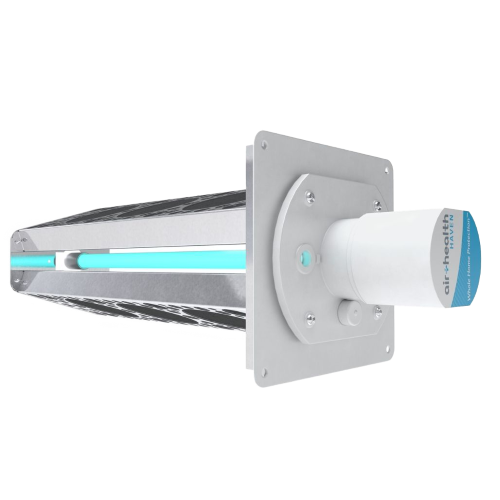Air ducts are out
of sight and out of mind. That’s why it’s even more important to start wondering
what’s traveling
 through your home’s ductwork. Some of the contaminants may be making you sick or possibly causing the home to smell bad. This guide will cover the
potentially harmful contaminants and particles often found in residential air
ducts as well as possible solutions.
through your home’s ductwork. Some of the contaminants may be making you sick or possibly causing the home to smell bad. This guide will cover the
potentially harmful contaminants and particles often found in residential air
ducts as well as possible solutions.
Mold in the Air Ducts
Mold can can grow in many places, including the air ducts, return register and filter, fan motor, supply registers, and the air conditioning components of most homes and businesses. Mold grows on the inside of your duct work because it needs a food source, moisture and warmth to grow and depending on the level of these 3 conditions, the mold can be high or low. The presence of mold in the air ducts is a serious health hazard and can be very expensive to clean. The spores from mold can travel through your home as far as 10 miles away!
Because of this, it’s important to take steps to eliminate the mold spores before they can travel through the home. Installing high grade filters and UVC lamps in the HVAC system can help to remove mold spores before it can spread throughout the ductwork. Mold can affect your family’s health including itchy eyes, headaches, nausea and irritation in the nose and/or throat. More advanced mold problems can lead to more systemic symptoms. If you want to learn more about combatting mold, see this video from Dr. Cerra from Wind and See Wellness center. Not only is your health effected by mold in your HVAC system but it could effect the value of your property and decrease the functionality of heating and cooling equipment.
Bacteria in the Air Ducts
Bacteria in air ducts are sometimes called bioaerosols. They grow in dark vents and spread through the home in your HVAC system. If you or your family are often experiencing sinus congestion, watery eyes, trouble breathing, a sore throat or chronic coughing and sneezing, that could be bacteria in your air vents. If you have your ductwork checked, remember that there are no EPA-registered chemical biocides for cleaning air duct systems that are internally insulated. You will need to find other long-term solutions for bacteria in your air, such as air purifiers with HEPA filters and UV-C sanitation
Dust and Dust mites in the Air Ducts
With commercial or residential properties, it’s
hardly a surprise to find dust mites in air ducts. Dust mites are too small to
be seen by the naked eye, and they live in warm, humid places according to the
American Lung Association. They will be the biggest problem for people with dust allergies, with symptoms including sneezing and
coughing, postnasal drip, runny nose, congestion
and or itchiness on the skin or in the eyes,
nose, mouth or throat.
They can also make other allergies and asthma
worse than usual.
What Do I Do to Remove Contaminants in Air Ducts?
The most important thing you can do is to prevent bacteria, dust and dirt from entering the air ducts. Surroundings do

not need to be moldy or damp in order for mold to thrive! Once they get into a home's ductwork, they can spread throughout the entire house. This means that you'll have to get all of your vents cleaned out. Before hiring a professional there are a few things you can do help remove these contaminants on your own.
- Replace the filter in the furnace(s) with a high quality, ideally HEPA filter, to remove the largest amount of dust and micro particles before they can travel through the system. A HEPA filter, which is also known as high efficiency particulate air filter is a standard in which the filter removes 99.97% of .3 micron particles. This type of filter will not only capture dust but also can capture mold spores and some bacteria.
- Add a UVC light to the furnace to reduce bacteria, mold spores and viruses. UV light is a safe, fast and environmentally-friendly method to destroy the ability of microorganisms to reproduce by causing mutations and/or cell death and failure to reproduce.
- Remove excess moisture from the home to take away food source for the mold.
A layered approach of adding a high quality HEPA filter, UVC lamp and eliminating the moisture will give you the best protection for your family. HEPA filters are readily available at any home store and you can get the UVC light in 2 different models.
The Haven HVAC air purifier provides a high powered UVC lamp that can be installed in as little as 15 minutes.
The Haven Plus HVAC air purifier provides a high powered UVC lamp, plus carbon filters and PRO-Cell technology. Carbon removes odors from the air and PRO-Cell technology removes VOCs.
 US Dollars
US Dollars
